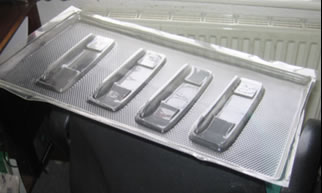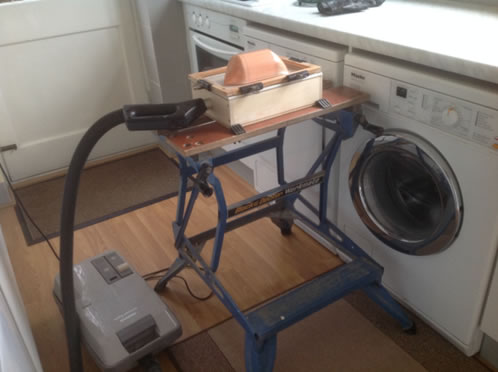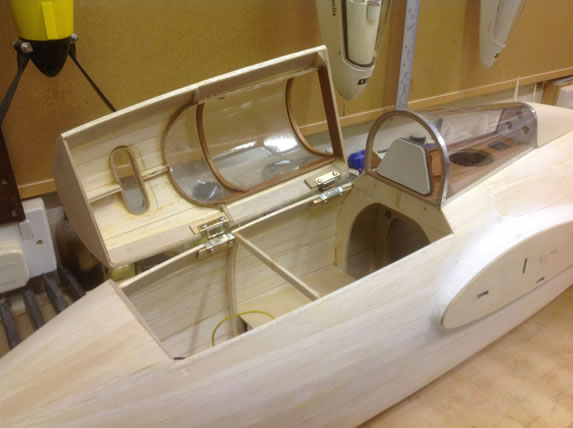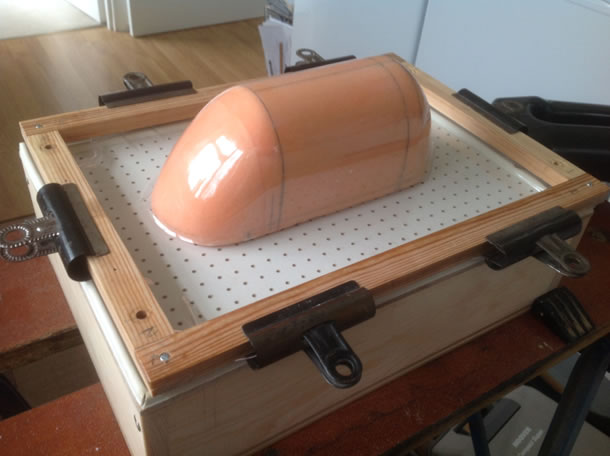A few years ago I was chatting to Phil Clarke about making plastic canopies, he said he had needed one for some scale model he was making (forgot the name of the model) He said he’d made it by draping a sheet of plastic over a pattern of the canopy and popping it into the oven until the plastic had sagged over the pattern . I think he said that this method was a bit hit and miss
I told him that I had used a vacuum forming machine at the school I worked at and described how this particular machine worked.
A few weeks ago he sent me a couple of photographs showing his second attempted at making a canopy for his latest project a Rhonsperber.

These are wing servo covers I made on a machine similar to the one in the sketch. ~ There are four left and four right hand servo covers on this ~ enough to cover eight wing servos |

This is a basic vacuum forming machine ~ The pattern is lowered below the plastic which is clamped in a frame ~ Heat is applied to the plastic by lowering the grill like oven box ~ When the plastic is pliable the pattern is raised up stretching the plastic over the pattern at the same time the vacuum pump is switched on |

This is Phil’s vacuum forming set-up. A box is connected to a vacuum cleaner ~ The lid of the box is made from pegboard (pegboard is hardboard with perforated holes . It was common in shops at one time as display boards) I’ve recently learned that Phil drilled all these holes in a piece of hardboard himself.
A pattern of the canopy is placed central on top of the box ~ The Perspex (plastic) is clamped to a wooden frame and placed in an oven ~ heated until extremely limp ~ quickly taken out of the oven and the frame with heated plastic is pressed firmly over the pattern while the vacuum is on |

The Rhonsperber’s canopy fitted and hinged ~ Looks great Phil ~ I can’t wait to seeing the finished model in the air The Club’s Scale weekend is on the 16th and 17th Aug . No pressure !! |
|
A neat job ~ Note how tight to the pattern the plastic fits where it come in contact with the perforated lid ~ No large radius corners ~ Always a problem area if the heated plastic has been misjudged |

